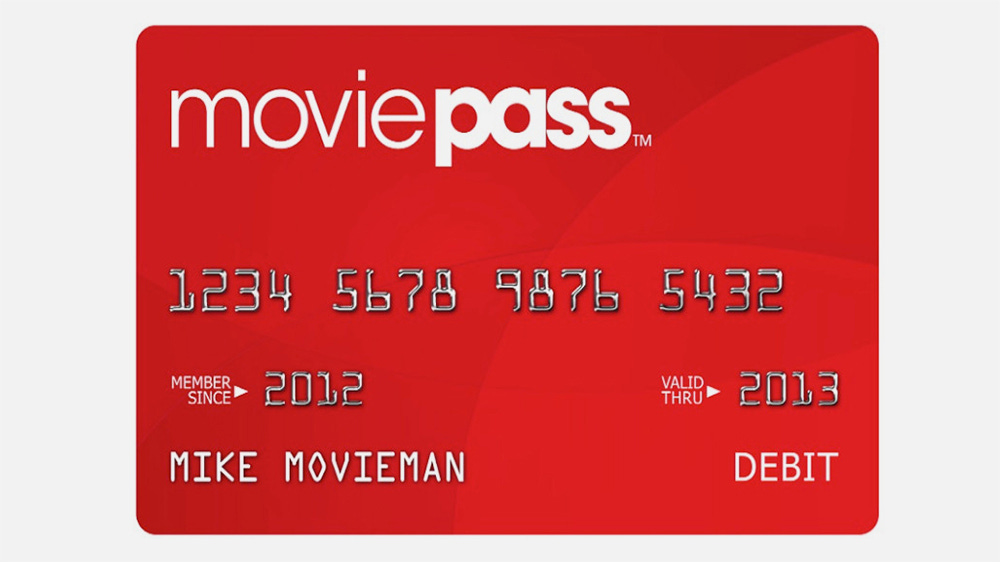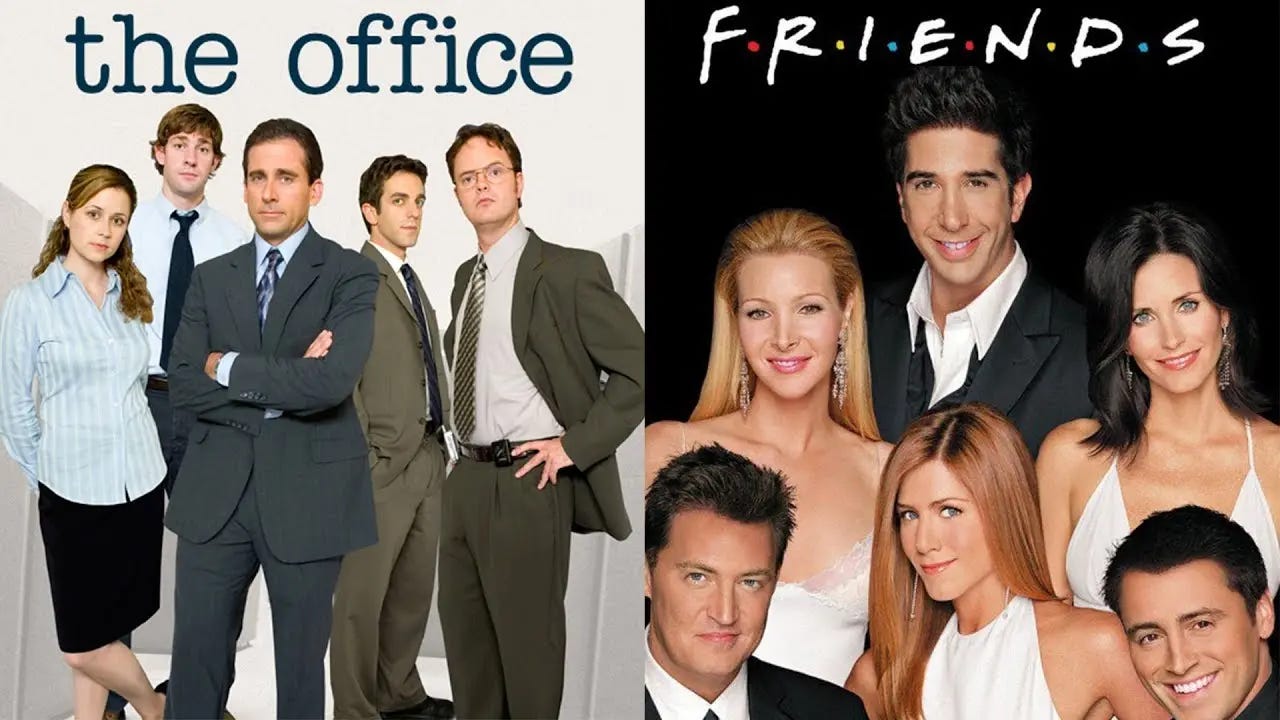Welcome back to Entertainment + Tech. Each week covers an interesting way technology & entertainment are colliding and where things might go from here.
Got a recommendation for a topic? Stray observation about a streaming platform that seems interesting? Let me know by responding to this email or reaching out on Twitter.
And if you’re new here, sign up to be the first to get future issues:

(Unsplash)
They had a bold strategy. They burned through tons of cash trying to modernize Hollywood. They faced skepticism from the existing players, even as those skeptics closely watched how it was turning out. And it was all extremely public, leading to a massive wave of schadenfreude when they failed just as everyone predicted all along.
Wait. Am I talking about Quibi or MoviePass? I’m not going to eulogize or make fun of them, because that’s been done enough. Instead, let’s look at both these companies to talk about innovation in Hollywood.
Movies, Please
Here’s a quick rundown of MoviePass for those who missed the saga or have forgotten. It’s only been a year since they shut down, but it feels like ten.
Though MoviePass was founded in 2011, the important part of the story begins in 2017 when MoviePass decided to offer an incredible product: allow users to see one free movie in theaters every day, all for a subscription of $10/month or $99/year. [1]
From the beginning, it felt unsustainable, which it was. I lived in San Francisco, where I would come out ahead after seeing a single movie. Some months I saw ten. These are terrible economics, so what were they trying to do?

MoviePass was a pathway to many abilities some consider to be unnatural. (Variety)
They were aiming for a couple different things to add up:
They wanted to collect data on users’ habits and sell it. This was the plan they originally announced. The supposed benefit of this plan would be that they get more data to sell the more movies a user sees. I never sat down to do the math, but coming from my experience at Google, there’s no way that additional data covers the cost of a movie ticket, so each ticket was still losing them money. I’m not sure if this was disingenuous or optimism about the value of the data.
They started to produce their own content. They had a large user base and had a channel to advertise directly to people who loved movies, driving them to particular films where, as investors, they would get a portion back on all the ticket sales. However, these were expensive investments to make, meaning a lot of risk (and they missed big with 0%-on-Rotten-Tomatoes Gotti). Unfortunately, they also still had to lose a cut to the theater for each ticket sale. [2]
The biggest goal: get studios to give them a discount on tickets or even a cut of concessions. MoviePass did drive viewers to theaters, and concession sales shot up–viewers had already saved, so they felt they could splurge on some popcorn. MoviePass wanted to use their massive subscriber base as leverage to get theater chains to play ball.
Here’s the problem though. In order to give themselves the leverage they needed, MoviePass had to burn massive amounts of cash. Metaphorically, they had to point their plane at the earth and go full-throttle, hoping to pull up in time. All the theater chains had to do was wait for them to crash. [3]
Making the A-List
It’s clear MoviePass was a concern to the major theaters, but isn’t it still in their best interests to get users coming in and buying concessions? Yes. It just turned out they didn’t need MoviePass to do that.
AMC built Stubs A-List, a competing product that made way more sense: it cost them less to offer, kept the upside from concessions, and kept users from going to competitors. [4]
Creative Destruction
It’s easy to judge MoviePass & Quibi for their mistakes, and it is worth examining their missteps & misunderstandings. That said, they tried to innovate in an industry that’s notoriously slow to update. They both tried something important.
Hollywood is not an industry that’s friendly to disruption. The major players are reluctant to cannibalize their own market or invest where there’s not ready money to be made, often only investing as a hedge against the future.
Theaters today are like taxis waiting for Uber to disrupt them. Even pre-pandemic, as people wrung their hands about the decline in tickets sold, it’s not hard to speculate why that was happening. As entertainment options available right from your own home have flourished, theater prices have remained high and the experience has (with a few exceptions) stagnated. Why leave your house, pay $16 per person, and watch crappy pre-trailer ads? Theaters continue to hang on because they’ve maintained their hold on big releases: studios do still make a lot of money there on tentpoles, which are high-profile enough to get audiences to show up, so they’re willing to play ball. MoviePass tried to change that calculus.
From Quibi’s side, they saw a gap where users were spending more and more time on mobile, but most Hollywood content available wasn’t well-suited for phone viewing. Imagine if TVs had come out to consumers and film studios had ignored the medium.
I’ve seen lots of people claim that users only want TikTok-style UGC on their phones, which I don’t believe. We just haven’t figured out the product yet. Unfortunately, Quibi didn’t do a good enough job developing it. They spent too much money before getting a sense of what worked. They enlisted the wrong talent because they wanted big names for buzz. They sourced content in the wrong ways–it turns out you can’t just buy unsold comedy scripts and cut them into 10 minute chunks. (This all, of course, compounds with my other concerns about Quibi’s platform.)
In the end, though, this mobile problem is something Hollywood needs to figure out. People still like to watch premium content on large screens, but they spend more and more of their day on phones. Hollywood can’t just sit on their hands as their market goes elsewhere.
But Netflix Did It
So how did mega-disruptor Netflix succeed? Because Netflix is a value-add for content owners. It’s an outlet you can license your content to and make more money off of it. Once they got large enough, it became a more important distribution channel. As Netflix did better, content owners just raised prices for the licensing.
Netflix led a slow disruption that didn’t immediately scare all their partners. Netflix’s next, larger disruption–making their own content–happened once they’d already built themselves up. Even despite their success there, it still took years for most other Hollywood players to buy into Direct-To-Consumer.

Dear Netflix, thanks for keeping these warm for us! - NBC, probably (OurCommunityNow)
They All Said I Was Crazy
Now it turns out theaters are getting disrupted anyway.
One obvious culprit is the pandemic. Sure, it’s bad for theaters that people can’t go to theaters right now, but the long-term effects could be even worse. Since people are stuck at home, studios have increased willingness to bring releases to them.
While Mulan may not have been the overall success Disney wanted, as of mid-September some estimates put it at $93M in revenue just from Disney+. The impact is higher than just that number, though. It doesn’t include new subscriptions Mulan drove to Disney+ or the value it added to Mulan’s brand. More importantly, Disney didn’t have to pay a single dime of that to theaters–under Forbes’ model, this equates to what they’d pull in from $186M in the box office.
Earlier this year, AMC & Universal announced a deal that shortened the theatrical window–the length of time Universal had to give theaters exclusive rights to show the film–from 90 days to just 17, after which they can be sold digitally.
Most importantly, the Paramount Decrees have been repealed, shifting more power to studios. Essentially, the most important provisions of the Decrees said studios couldn’t own theater chains and studios couldn’t force theaters to buy blocks of movies in order to get access to a single hot title. Now if Disney wanted, they could buy (more) theaters, raise the bar on the experience, and only show Disney films.

UNLIMITED POWER! (Unsplash)
This is not a great time to be a legacy theater business. If they’re going to survive it will be critical to lower the barriers to getting users to theaters and make better use of them once there. MoviePass pushing AMC to create A-List might be the biggest favor they could have done for them. Clearly, MoviePass was on to something.
Quibi didn’t last long enough or build enough users to fully get the ball rolling. That said, it has gotten people to talk about premium short-form. The high-profile failure may spook the major players for a bit, but I expect others will return to it, especially the existing streaming platforms.
A… Nibble?
Why can’t Netflix be a better Quibi?
They already have a user base, including a significant portion on mobile. The added piece is increased investment in short-form content, which they can do more carefully and as a value-add, much like their first forays into Original content. In fact, Netflix already has content in this vein, with series like Love, Death & Robots or I Think You Should Leave. While not directly targeted at mobile, they work well for a quick bite. Maybe Netflix will start to shoot some vertical video soon. Pushing on mobile could be their next disruption.
In the end, Quibi and MoviePass were right that the industry needs to innovate. They pushed forward in important directions, but couldn’t get there themselves. We can laugh at their failures and malign the money wasted. In the end, though, someone else will build what they envisioned, and it’ll change the industry.
------
[1] As the product flailed and burnt money, they eventually limited users to 3 movies per month, added additional fees for new movies, blackouts for certain films, and a growing list of other weird hassles. For a deeper history of the MoviePass struggle, The Verge has a run down that aligned with most of my thoughts.
[2] Also, the longer a movie is in theaters, the larger the cut of each ticket that goes to the theater, so their economics get worse for older movies.
[3] Some speculated MoviePass was hoping people would pay the monthly fee and not use it. For such a low price point against huge possible costs, this strategy doesn’t make much sense. Again, in a city, one movie/month is enough to negate that, and going to five negates at least five other people’s subscription payments. Any coherent strategy would have to scale with the tickets sold.
[4] Most users don’t care much about flexibility in where they can go see a movie, which was the only advantage MoviePass could uniquely offer. They have a convenient location they go to, and aside from where specific showtimes do/don’t work out, most large theaters are basically interchangeable (hence why AMC invested in their original Stubs loyalty program: lock-in).
Interestingly, we can talk about cases where aggregation is and isn’t useful. When each individual supplier is basically the same as the others, who cares? To get meta on aggregation, a platform that combines Netflix, Hulu, and Disney+ content is valuable. A platform that combines Spotify, Apple Music, and YouTube Music content is… Spotify plus a few tracks?
[5] To be clear, I’m not saying every movie can just be released through Premium Video-On-Demand now. This was an intended blockbuster released under particular circumstances. However, I’m sure it’s whet Disney’s appetite to continue experimenting even after the pandemic is done.
Newsletters to Check Out
🕹 The Pause Button by Max Lowenthal & Fawzi Itanti - The Pause Button is a weekly round-up of the most important content in gaming, including news, analysis, and industry breakdowns
📱Consumer Startups by Leo Luo - Leo writes about the stories behind the most successful early stage B2C startups. Check it out if you are interested in social apps, brands, marketplaces, and all things consumer.
Thanks for reading Entertainment + Tech. If you know someone else who would enjoy this newsletter, please share it with them!



